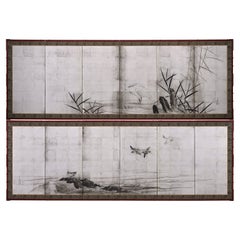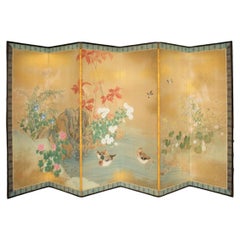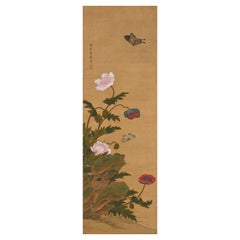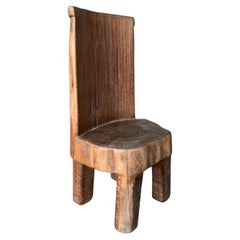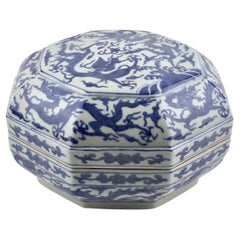Asia - Asian Art and Furniture
Early 1900s Japanese Meiji Antique Asia - Asian Art and Furniture
Silver Leaf
21st Century and Contemporary Japanese Meiji Asia - Asian Art and Furniture
Gold
19th Century Japanese Antique Asia - Asian Art and Furniture
Paper
Early 19th Century Japanese Edo Antique Asia - Asian Art and Furniture
Silk
Late 20th Century Indonesian Organic Modern Asia - Asian Art and Furniture
Wood, Teak
16th Century Hong Kong Ming Antique Asia - Asian Art and Furniture
Ceramic
Mid-20th Century Japanese Asia - Asian Art and Furniture
Wood
21st Century and Contemporary Thai Organic Modern Asia - Asian Art and Furniture
Organic Material, Silk
Early 20th Century Japanese Primitive Asia - Asian Art and Furniture
Wood
19th Century Hong Kong Qing Antique Asia - Asian Art and Furniture
Ceramic
Early 20th Century Japanese Asia - Asian Art and Furniture
Wood
19th Century Chinese Qing Antique Asia - Asian Art and Furniture
Wood, Lacquer
Early 20th Century Japanese Asia - Asian Art and Furniture
Wood
17th Century Edo Antique Asia - Asian Art and Furniture
Gold Leaf
Early 20th Century Chinese Qing Asia - Asian Art and Furniture
Ceramic
15th Century and Earlier Chinese Antique Asia - Asian Art and Furniture
Pottery
17th Century Vietnamese Qing Antique Asia - Asian Art and Furniture
Ceramic, Porcelain
2010s Japanese Edo Asia - Asian Art and Furniture
Brass
19th Century Chinese Qing Antique Asia - Asian Art and Furniture
Wood, Elm
17th Century Burmese Antique Asia - Asian Art and Furniture
Wood
21st Century and Contemporary Japanese Asia - Asian Art and Furniture
Ceramic
Early 20th Century Japanese Asia - Asian Art and Furniture
Bronze
21st Century and Contemporary Thai Organic Modern Asia - Asian Art and Furniture
Stainless Steel, Metallic Thread
Early 20th Century Balinese Other Asia - Asian Art and Furniture
Wood
Early 19th Century Japanese Antique Asia - Asian Art and Furniture
Cotton
16th Century Burmese Antique Asia - Asian Art and Furniture
Bronze
Mid-20th Century Japanese Showa Asia - Asian Art and Furniture
Wood
Late 19th Century Japanese Meiji Antique Asia - Asian Art and Furniture
Wood, Cedar
19th Century Burmese Antique Asia - Asian Art and Furniture
Bronze
Early 20th Century French Art Deco Asia - Asian Art and Furniture
Alabaster, Marble, Spelter
21st Century and Contemporary Chinese Asia - Asian Art and Furniture
Silk
Mid-19th Century Asian Meiji Antique Asia - Asian Art and Furniture
Silk
1950s Balinese Folk Art Vintage Asia - Asian Art and Furniture
Cotton, Paint
Early 20th Century Chinese Qing Asia - Asian Art and Furniture
Ceramic
Mid-20th Century Japanese Asia - Asian Art and Furniture
Ceramic
Early 20th Century Japanese Asia - Asian Art and Furniture
Bronze
21st Century and Contemporary Chinese Asia - Asian Art and Furniture
Paper
19th Century Japanese Antique Asia - Asian Art and Furniture
Paper
15th Century and Earlier Japanese Antique Asia - Asian Art and Furniture
Ceramic
21st Century and Contemporary Thai Mid-Century Modern Asia - Asian Art and Furniture
Wood
20th Century Asia - Asian Art and Furniture
Paper
Early 17th Century Japanese Edo Antique Asia - Asian Art and Furniture
Wood, Paper
Mid-19th Century Japanese Edo Antique Asia - Asian Art and Furniture
Paper
20th Century Japanese Showa Asia - Asian Art and Furniture
Silver Leaf
19th Century Japanese Edo Antique Asia - Asian Art and Furniture
Lacquer
Early 20th Century Indonesian Tribal Asia - Asian Art and Furniture
Hardwood
19th Century Japanese Antique Asia - Asian Art and Furniture
Silk, Paper
Early 20th Century Taisho Asia - Asian Art and Furniture
Wood
21st Century and Contemporary Thai Organic Modern Asia - Asian Art and Furniture
Rattan
19th Century Edo Antique Asia - Asian Art and Furniture
Silver Leaf
15th Century and Earlier Hong Kong Antique Asia - Asian Art and Furniture
Ceramic
15th Century and Earlier Hong Kong Han Antique Asia - Asian Art and Furniture
Celadon
16th Century Hong Kong Ming Antique Asia - Asian Art and Furniture
Copper
2010s Asia - Asian Art and Furniture
Porcelain
20th Century Japanese Showa Asia - Asian Art and Furniture
Wood
20th Century Japanese Asia - Asian Art and Furniture
Paper
20th Century Japanese Showa Asia - Asian Art and Furniture
Silk
21st Century and Contemporary Japanese Japonisme Asia - Asian Art and Furniture
Ceramic, Wood
21st Century and Contemporary Asia - Asian Art and Furniture
Oak
Early 20th Century Japanese Meiji Asia - Asian Art and Furniture
Wood
Read More
Symbols of Happiness and Rebirth Adorn This Japanese Satsuma Bowl
Decorated with white cranes and the sought-after thousand-butterflies motif, the Meiji-period vessel offers both a celebration of traditional aesthetics and a clear reflection of the era’s appetite for exquisite export pieces.
Chicago’s Pagoda Red Has a Spirited Mix of Asian Antiques and Bold New Art
For 25 years, gallerist Betsy Nathan has leveraged her keen eye and key connections to bring a unique selection of rare finds to the market.
In L.A., Gallerist JF Chen Has Long Championed Eclectic Blue-Chip Design
Now working alongside his daughter Bianca, dealer Joel Chen has presented a most covetable array of antiques, art and contemporary creations for more than 40 years.
12 Calming Spaces Inspired by Japanese Design
From cherry-blossom-adorned walls paired with glamorous lighting to wood-paneled ceilings above checkerboard-patterned chairs, these 12 spaces seamlessly blend Eastern and Western aesthetics.
Rodrigo Rivero Lake’s Mexico City Showroom Is a Museum-Worthy Trove of Spanish Colonial and Asian Antiques
The dealer and curator has spent the past 50 years amassing a collection of exceptional art, furniture and architectural elements that trace the cultural influence of the Spanish empire from Europe to the Americas and beyond.
16 Refined Asian-Inspired Interiors
These spaces exemplify how Eastern elements elevate a home's decor.
